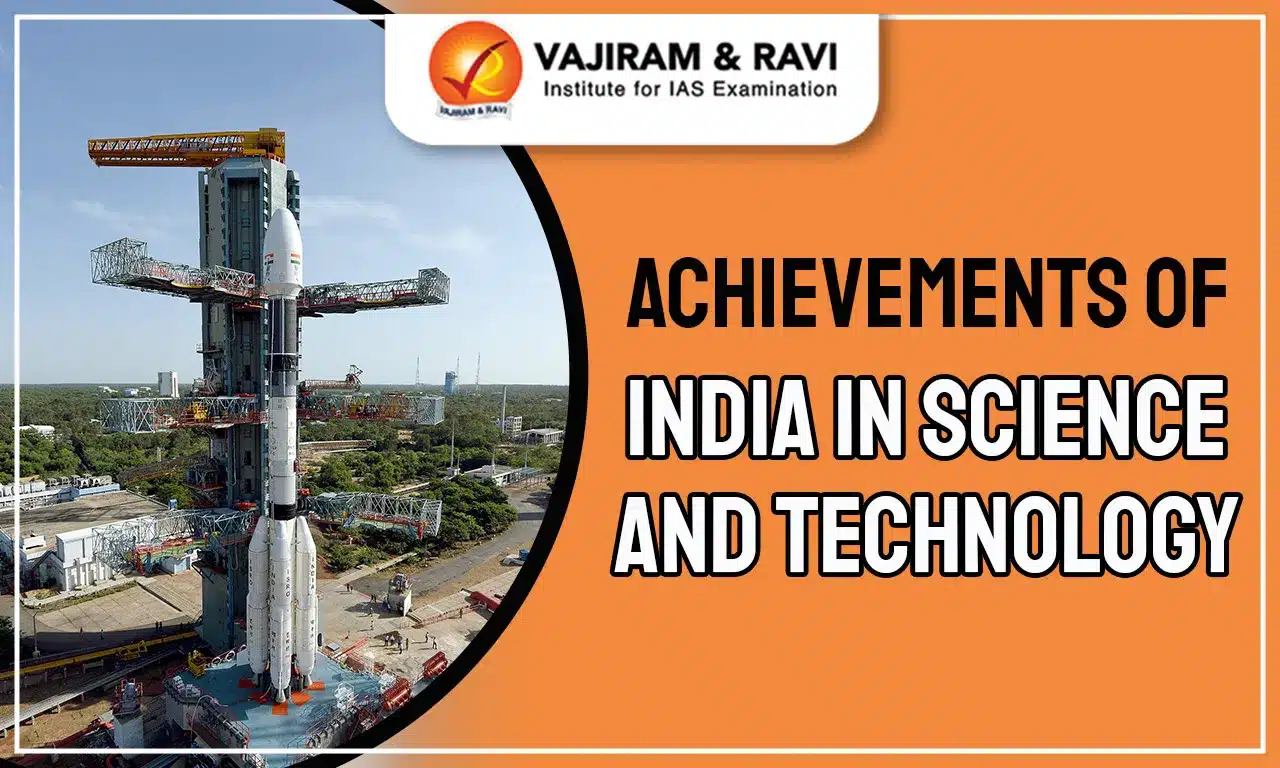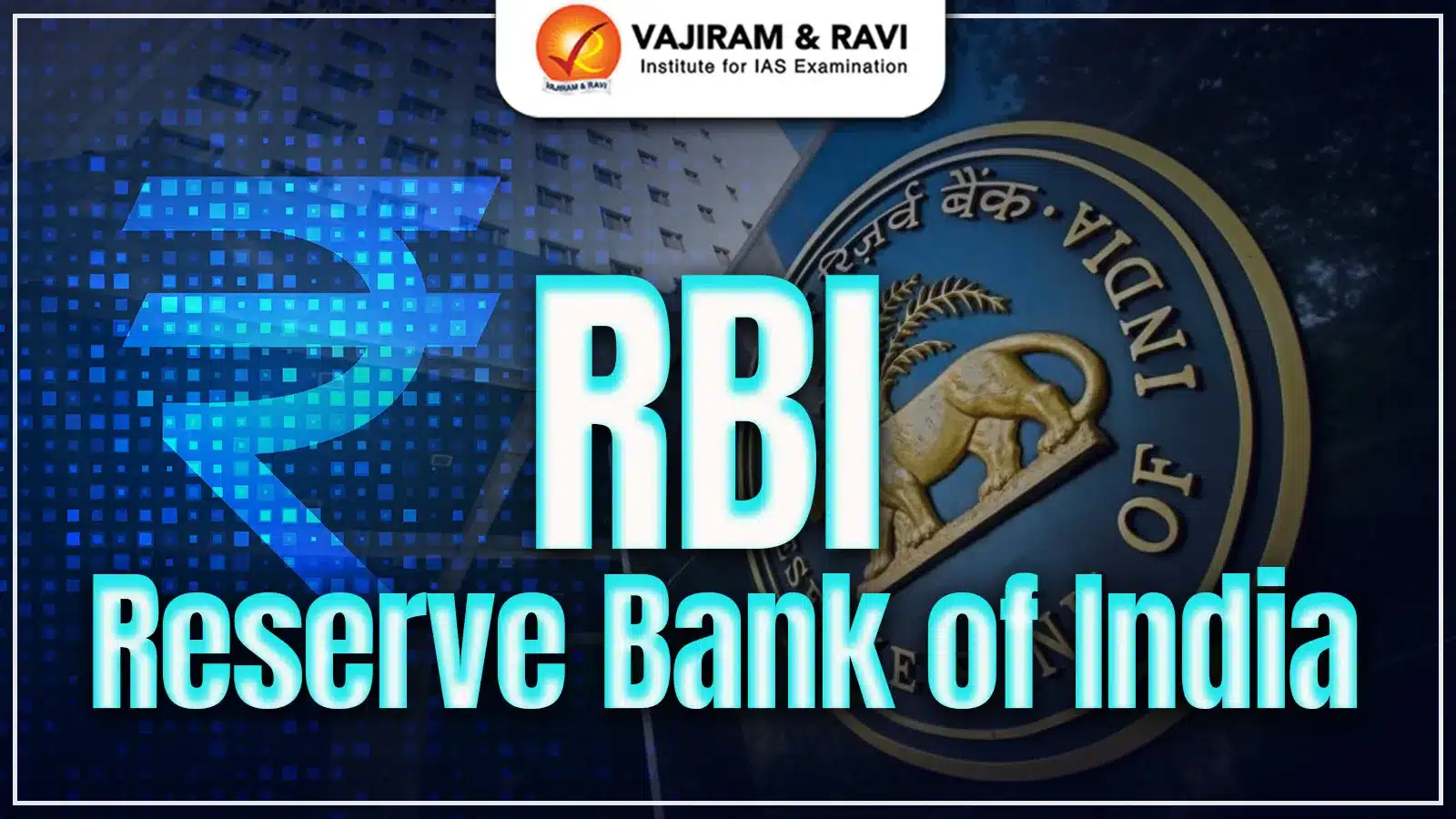Advancements in technology have been the major cause for the development of a country as well as human civilization. India, recognised globally for its scientific rigour and potential, has been contributing to the fields of science and technology since ancient times as evident from the discovery of zero to the research in particle physics. Continuing striving towards science and technology in ancient and medieval times, India has been able to gain pace in scientific discoveries and innovations after independence. Indian scientists have won the most prestigious Nobel prize in all three areas of Science.
Today, India is making progress in more advanced technology such as tokamak, neutrino, gravitational waves, scramjets, sending human missions into space, and emerging technologies.
Science and Technology in Ancient India
India's history of scientific discovery and development dates back to the Vedic period. Aryabhatta, the famous mathematician invented ‘zero’. The concept of squares, circles, triangles, fractions, algebraic formulae, and astronomy have all had their origins in Vedic literature.
- The complex layout of Harappantowns with underground drainage, civil sanitation, hydraulic engineering, and air-cooling architecture, as well as the presence of the Iron Pillar in Delhi, demonstrate that India's indigenous technologies were very sophisticated.
- Rig Veda describes the concepts of astronomy and metaphysics.
- Ancient India was a pioneer in developing the technology for producing rust-free iron. Called Wootz steel, it was traded to Europe and the Middle East for sword making.
- Many scholars like Charaka and Sushruta have made invaluable contributions to Ayurveda, as found in ancient manuscripts.
Learn in Detail: Science and Technology in Ancient India
Science and Technology in Medieval India
Although at a slower pace, the medieval period also witnessed the growth of science and technology in India.
- Indian Mathematicians:
- Narayana Pandit is a well-known figure for his contributions to Mathematics - Ganitakaumudi and Bijaganitavatamsa.
- Gangadhara wrote three famous treaties that gave rules for trigonometric terms - Lilavati Karamdipika, Suddhantadipika, and Lilavati Vyakhya.
- In the Mughal period, Faizi translated Bhaskara’s Bijaganit.
- Biology:
- In the thirteenth century, Hamsadeva compiled Mrga-paksi-sastra, a work in the field of biology. This provides a general, though not always scientific, account of some hunting animals and birds.
- Jahangir, in his work Tuzuk-ijahangiri recorded his observations and experiments on breeding and hybridization.
- Chemistry:
- Two notable treatises - Siddhayoga by Vrinda(around 975 CE) and Chakradatta by Chakrapani Dutta (around 1050 CE) were written in this period.
- Mercury and sulphur were the materials on which extensive research was carried out in 700 CE- 1300 CE.
- Nagarjuna, the author of Rasaratnaakara stands pre-eminent among the Indian rasavaadins during the medieval India.
- Rasaarnava and Rasaratnasamcchaya of Vaagbhata are two of the many important texts after Rasaratnaakara.
- The work Ain-i-Akbari discusses the regulation of Akbar's Perfume Office.
- Astronomy:
- Mehendra Suri who was a court astronomer of Firoz Shah Tughlak, developed “Yantraja”, an astronomical instrument.
- Maharaja Sawai Jai Singh-II set up the five astronomical observatories in Delhi, Ujjain, Varanasi, Mathura, and Jaipur.
- Medicine: During the medieval period, the Unani Tibb medical system flourished in India.
- Ali-bin Rabban wrote Firdausu-Hikmat in which he summarised the system of Greek medicine and Indian medical knowledge.
- The Tibbi Aurangzebi is based on Ayurvedic sources.
Science and Technology in Modern India
At the dawn of the twentieth century, great strides were made by Indian scientists. The innate ability to perform creatively in science came to be backed by institutional setups and strong state support after the country’s independence in 1947.
India’s Contribution to Physics
Since the early 20th century, many physicists of India have contributed to Physics.
- Jagdish Chandra Bose: He pioneered the study of radio and microwave optics, and electro-physiology. He was the first person to detect radio signals, thus demonstrating wireless communication for the first time.
- He invented the crescograph, through which he measured plant response to various stimuli and hypothesised that plants can feel pain, understand affection, etc.
- CV Raman: He is known for his work on the scattering effect of light. His finding is called ‘Raman Effect’ for which he received the Nobel Prize in Physics, in 1930.
- Subrahmanyan Chandrasekhar: He was an Indian-American astrophysicist awarded the 1983 Nobel Prize for Physics for his theoretical studies of the structure and evolution of the stars.
- Satyendra Nath Bose: He was an Indian physicist specialising in quantum mechanics and provided a new derivation of Planck's law.
- He is best known for providing the foundation of Bose-Einstein statistics and developing the theory of Bose-Einstein condensates.
- Contribution to particle physics:
- International Neutrino Observatory (INO): The INO project broadly aims to create an outstanding underground laboratory in India for non-accelerator-based high energy and nuclear physics research.
- CERN's: Indian scientists at CERN contributed to the construction of a large hadron collider and other experiments such as ALICE and CMS experiment.
- Laser Interferometer Gravitational-Wave Observatory (LIGO) - India: It is a mega-science project in Astronomy and the scientific goals of the project are in the area of fundamental physics.
India’s Contribution to Chemistry
- Prafulla Chandra Ray: He was regarded as the ‘Father of Chemical Science in India and contributed to inorganic and organic nitrites and organic thio compounds.
- Sir Shanti Swaroop Bhatnagar: He played an immense role in the constitution of the Council of Scientific and Industrial Research (CSIR) and did considerable work in applied and industrial chemistry.
- CNR Rao: He is well-known for his work in structural and solid-state chemistry. He has made contributions in chemical spectroscopy, surface chemistry, molecular structure and high-temperature superconductivity.
India’s Contribution to Life Sciences
- Cell Biology: Work at the cellular level using modern molecular genetic tools started in India with the initiation of Molecular Biology at the Tata Institute of Fundamental Research.
- Several model systems such as E. coli, fruit fly (Drosophila), and C. elegans, had been established, to significantly enhance knowledge of complex biological problems.
- The most outstanding contributions were the discovery of exotoxins and the atomic structural model of collagen.
- DNA Fingerprinting: DNA fingerprinting in India came into existence in 1988. Centre for Cellular and Molecular Biology scientists developed the technique and made it available for use, making India the third country to develop its own DNA fingerprinting probe.
- Famous personalities:
- Har Gobind Khorana: He was a Nobel Prize-winning Indian American biochemist who showed the order of nucleotides in nucleic acids, which carry the genetic code of the cell and control the cell's synthesis of proteins.
- G.N Ramachandran: He contributed to molecular biophysics, particularly in the field of protein structure research. He created a three-dimensional picture of organic material which is known as the Ramachandran plot.
- His discovery of collagen's triple helical structure was important for the understanding of peptide structure.
- Venkataraman Ramakrishnan: He is a Nobel Prize-winning biochemist who works on the atomic structure of the ribosome as well as the structure of chromatin and histone.
- He demonstrated how ribosomes react to various chemicals using a 3D technique.
Achievements of India in Space
India’s space journey started with the establishment of the Indian National Committee for Space Research (INCOSPAR) in 1962, later renamed the Indian Space Research Organisation (ISRO) in 1969. Key highlights of India’s space endeavours:
- First Satellite: Aryabhata was India’s first satellite which was launched on April 19th, 1975 using Russia’s Kosmos-3M launch vehicle.
- Launch Vehicles: Satellite Launch Vehicle-3 was India’s first experimental satellite launch vehicle, launched in 1980.
- Its success paved the way for advanced launch vehicle projects including the Augmented Satellite Launch Vehicle (ASLV), Polar Satellite Launch Vehicle (PSLV), Geosynchronous Satellite Launch Vehicle (GSLV), and LVM3.
- Chandrayaan Missions:
- Chandrayaan-1 was India’s first moon mission, launched in 2008.
- Chandrayaan-2 was India's first attempt to soft-land on the Moon which was launched in 2019 by GSLV MkIII-M1.
- With the successful launch of Chandrayaan-3 in 2023, India became the first country to successfully land a spacecraft near the lunar south pole.
- Mars Orbiter Mission: MoM, India’s first interplanetary mission, was launched in 2013.
- After Roscosmos, NASA, and the European Space Agency, India became the fourth space agency in the world to reach Mars orbit.
- It also made India the first country in the world to reach Martian orbit in its maiden attempt.
- 104 Satellites in a single flight: PSLV-C37 successfully launched the 714 kg Cartosat-2 Series Satellite along with 103 co-passenger satellites in 2017.
- Aditya-L1 Mission: In September 2023 India launched the Aditya-L1 mission, the first space-based Indian mission to study the Sun.
- Gaganyaan: The Gaganyaan Mission is an ongoing project in India to send a three-person crew to a 400 km Low Earth Orbit (LEO).
- Reusable Launch Vehicle - Technology Demonstrator (RLV-TD): It is one of ISRO's most technologically challenging projects aimed at developing critical technologies for a fully reusable launch vehicle to enable low-cost access to space.
- Cryogenic Technology: In 2003, the Indian space agency successfully tested its first cryogenic engine. India is now one of only six countries to have developed their own cryogenic engines.
- Scramjet Engines: A scramjet engine is an improvement over the ramjet engine as it efficiently operates at hypersonic speeds and allows supersonic combustion.
Achievements of India in Nuclear Sciences
India made the formal beginning of its programme on nuclear energy by establishing the Atomic Energy Commission in 1948 and the Atomic Energy Establishment in 1957, which was later renamed as Bhabha Atomic Research Center (BARC).
- Nuclear energy for civil application:
- Dr. Homi Bhabha formulated India's three-stage nuclear power programme in the 1950s.
- Apsara, the first nuclear fission reactor, was developed in 1956. Subsequently, nuclear power stations and other reactors have been developed in India.
- Currently, India has 23 operational fission reactors, totalling 6780 MWe in installed capacity.
- As for fusion energy, India has its own Tokamak programmes and also is a member of the ITER project.
- Nuclear energy for defence:
- India conducted an underground nuclear explosion at Pokhran in 1974, codenamed “Smiling Buddha.
- Pokhran-II: In 1998, five nuclear devices (including thermonuclear bombs) were successfully detonated.
Achievements of India in Defence
India is one of the strongest military forces in the world.
- Some of the major defence manufacturing companies in India are Bharat Earth Movers Ltd. (BEML), Bharat Electronics Ltd. (BEL), and Hindustan Aeronautics Ltd. (HAL).
- Missile System: India is one of the few countries in the world to have indigenously developed missile systems including critical technologies like the re-entry tip for ballistic missiles.
- Integrated Guided Missile Development Programme (IGMDP), began on July 26, 1983. The program resulted in the development of a slew of missiles, including the strategic Agni Integrated Range Ballistic Missile (IRBM), the tactical Prithvi, the Akash and Trishul surface-to-air missiles, and the Nag anti-tank guided missile.
- BrahMos is a supersonic cruise missile system capable of being launched from land, sea, or air.
- Talk about Hypersonic technology (cruise and ballistic both), using scramjets.
- The first indigenous aircraft carrier Indian Naval Ship (INS) Vikrant was commissioned in the Indian Navy in 2022.
- Project-75 (I): Project-75(I) is a follow-up project of Project 75 conceived in 1997. It is a military acquisition initiative that aims to procure diesel-electric attack submarines with fuel cells and an Air-Independent Propulsion System (AIP) for the Indian Navy.
- India’s Nuclear Triad: In 2019, after INS Arihant completed its first deterrence patrol, the government announced the establishment of India’s “survivable nuclear triad” — the capability of launching nuclear strikes from land, air, and sea platforms.
- This places India in the league of the few countries that can design, construct, and operate Strategic Strike Nuclear Submarines (SSBN).
- Innovations for Defence Excellence (iDEX): The Indian government is focusing on innovative solutions to empower the country's defence and security through the 'Innovations for Defence Excellence (iDEX)' program.
- Indigenisation in defence: The government has taken adequate steps to make the country self-reliant by developing indigenous advanced technologies and complex systems.
- DRDO enhanced the technological capabilities of the Indian industry, transforming India into a hub of advanced defence technologies and developing state-of-the-art defence equipment and systems.
- Hindustan Aeronautics Limited (HAL): Indigenization with the primary objective of achieving Make in India and lowering dependence on foreign countries, especially for critical items is one of the key thrust areas of HAL.
Emerging Technologies in India
India is also excelling in cutting-edge technologies such as 5G, artificial intelligence, blockchain, augmented and virtual reality, machine learning and deep learning, robots, natural language processing, and so on. The Emerging Technologies Division of MeitY is in charge of encouraging and promoting the use of cutting-edge technologies throughout the country.
- Supercomputers: India is fast emerging as a leader in high-power computing with the National Supercomputing Mission (NSM) boosting it.
- PARAM Shivay, the first supercomputer assembled indigenously, followed by PARAM Shakti, PARAM Brahma, PARAM Yukti, and PARAM Sanganak.
- Quantum Computing: Many programs are geared towards training students and researchers in quantum computing, including the National Mission for Quantum Frontier and others such as the National Mission on Quantum Technologies and Applications, and Quantum Computing Applications Lab.
- Blockchain Technology: The National Blockchain Framework is a national-level infrastructure for blockchain which includes blockchain-as-a-service, geographically distributed nodes, creating awareness, and developing human resources, among other initiatives.
- Initiative on Critical and Emerging Technology: Launched in 2023, it is a framework agreed upon by India and the U.S. for cooperation on critical and emerging technologies including artificial intelligence, semiconductors, quantum computing and wireless telecommunication.
Last updated on November, 2025
→ Check out the latest UPSC Syllabus 2026 here.
→ Join Vajiram & Ravi’s Interview Guidance Programme for expert help to crack your final UPSC stage.
→ UPSC Mains Result 2025 is now out.
→ UPSC Notification 2026 is scheduled to be released on January 14, 2026.
→ UPSC Calendar 2026 is released on 15th May, 2025.
→ The UPSC Vacancy 2025 were released 1129, out of which 979 were for UPSC CSE and remaining 150 are for UPSC IFoS.
→ UPSC Prelims 2026 will be conducted on 24th May, 2026 & UPSC Mains 2026 will be conducted on 21st August 2026.
→ The UPSC Selection Process is of 3 stages-Prelims, Mains and Interview.
→ UPSC Result 2024 is released with latest UPSC Marksheet 2024. Check Now!
→ UPSC Prelims Result 2025 is out now for the CSE held on 25 May 2025.
→ UPSC Toppers List 2024 is released now. Shakti Dubey is UPSC AIR 1 2024 Topper.
→ UPSC Prelims Question Paper 2025 and Unofficial Prelims Answer Key 2025 are available now.
→ UPSC Mains Question Paper 2025 is out for Essay, GS 1, 2, 3 & GS 4.
→ UPSC Mains Indian Language Question Paper 2025 is now out.
→ UPSC Mains Optional Question Paper 2025 is now out.
→ Also check Best IAS Coaching in Delhi
Achievements of India in Science and Technology FAQs
Q1. What are the achievements of India in Science and Technology during the ancient period?+
Q2. What are the contributions of India in the field of biotechnology?+

















